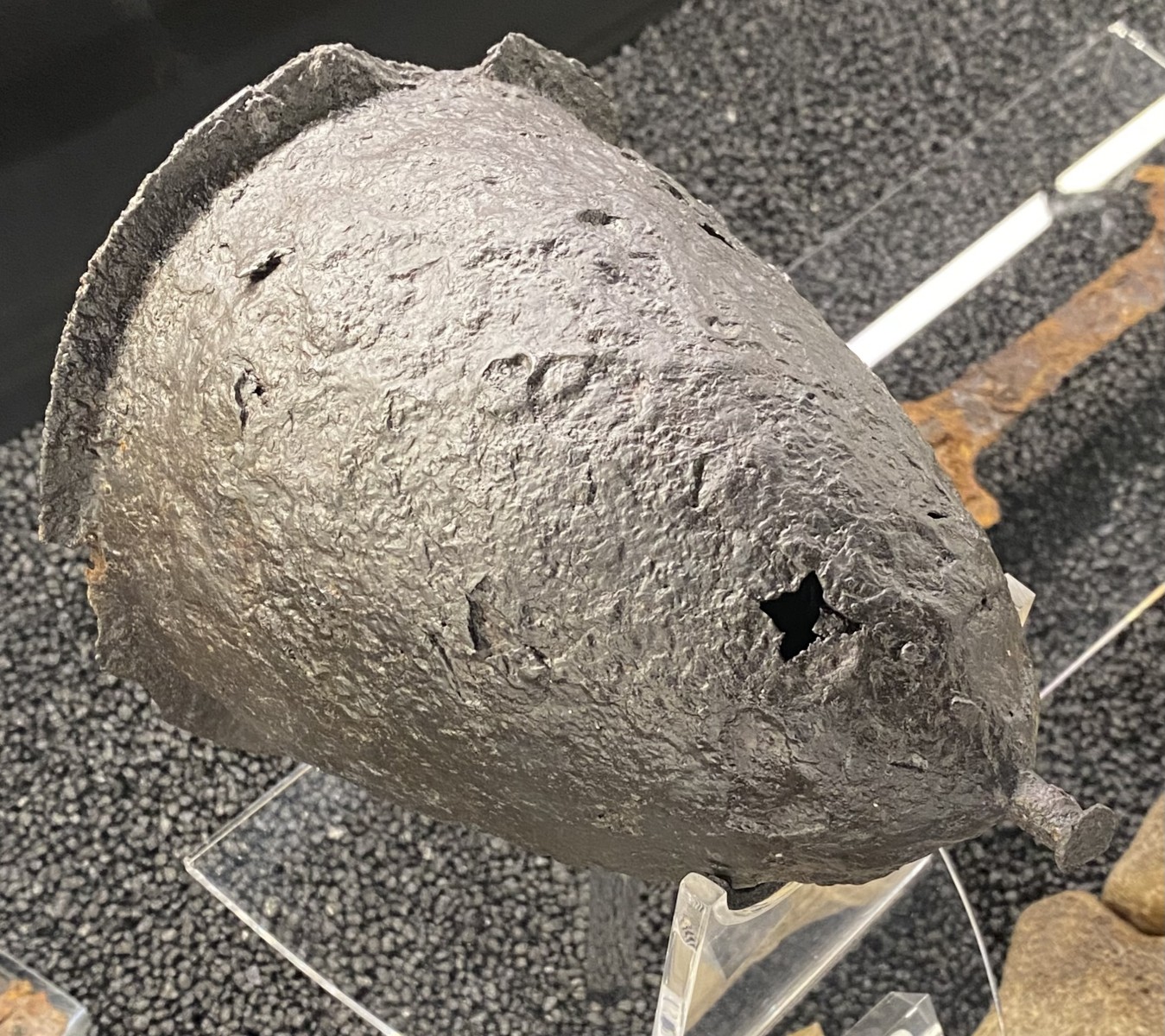The remains of Lowbury man head to Germany as team seeks to unravel the mystery of Lowbury Hill
People intrigued to see the remains of what is currently thought to be a seventh century Anglo-Saxon warrior discovered near Goring in southern Oxfordshire have until 31 October to see them on display.
The Lowbury man is currently at the Oxfordshire Museum in Woodstock but will soon come off display for six weeks as a research team seeks to learn more about him
The work will include DNA and radiocarbon testing to confirm his sex, when he lived, and his ancestry.
Councillor Jenny Hannaby, Oxfordshire County Council’s Cabinet Member for Community Services and Safety, said: “I’m excited to find out what more we can learn from the remains and what it may tell us about the Lowbury Hill site. It’s clear that the site was a beacon of activity for hundreds, if not thousands, of years, but up to now, we appear to know very little about the area.
“I hope that our modern testing will discover more about who this man was and just why he ended up buried at Lowbury Hill near Goring”
He was discovered at what is believed to have been the site of a Roman-era enclosure and Anglo-Saxon burial mound.
Analysis so far suggests the man was a seventh-century warrior that lived in Cornwall or western Ireland before being buried on Lowbury Hill. His grave contained elaborate items, including a sword, shield, enameled spearhead, knife, shears, a bronze hanging bowl and a bone comb – all on display in the Oxfordshire Museum, Woodstock.
His discovery within a burial mound on Lowbury Hill and the items he was buried with indicate he was a high-status individual from the early medieval (Anglo-Saxon) time period, with some suggesting he may have been a warlord.
He was also discovered alongside a woman. She is believed to have been about 40 years old Her remains have been radio-carbon dated to about 550 to 650 AD. Unfortunately, she was buried without grave items, and very little is known about her.
Both individuals are being studied by student Summer Courts as part of her PhD research at the University of Reading. The research is being supervised by Prof. Amy Smith (University of Reading) Dr Sophie Beckett (Cranfield University) and Angie Bolton (Oxfordshire Museum Service).
The DNA data and CT scans will also help to explore questions about their ancestry and what diseases they may have suffered from. By re-assessing these individuals, Summer hopes to understand their lived experience on a more personal level. It is hoped that we may discover whether or not the two individuals buried on Lowbury Hill were closely related.
The research has been funded by the Arts and Humanities Research Council via its South, West and Wales Doctoral Training Partnership. The DNA analysis will be undertaken in collaboration with Professor Stephan Schiffels at the Max Planck Institute for Evolutionary Anthropology. All data produced during the research will be provided to the Oxfordshire Museum Service, and updated information regarding both individuals will be included in the display at the Oxfordshire Museum.
Oxfordshire Museums Service and Goring Library are running an exhibition and events until 24 November about the archaeological work at Lowbury Hill. For more information, visit the museum’s service’s website.

